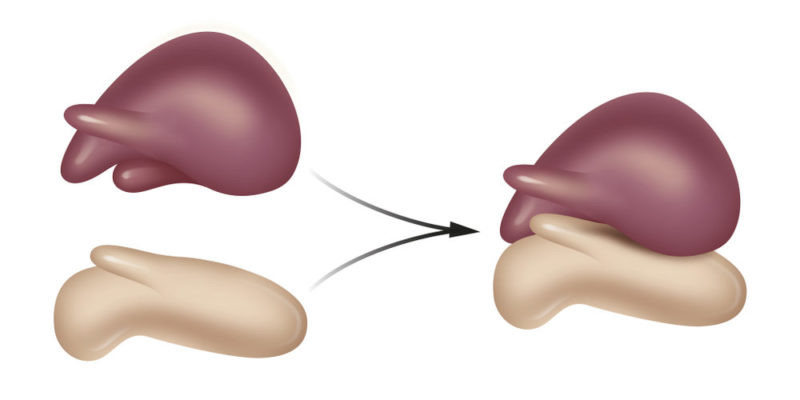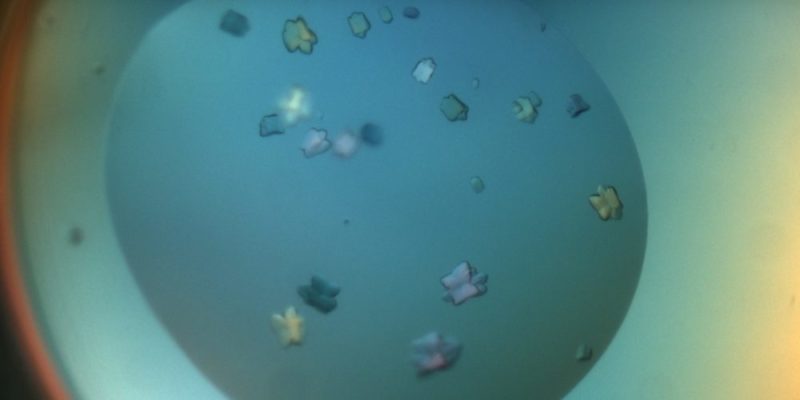We explain what ribosomes are, their history and how they were discovered. Its characteristics and stages of protein synthesis.
What are Ribosomes?
Ribosomes are supramolecular complexes made up of nucleic acid ( RNA molecules ) and proteins. They are present in cells throughout the body (with the exception of sperm), although more are found in cells of the liver and pancreas. They are part of the membrane of the endoplasmic reticulum.
Within ribosomes, protein synthesis takes place, that is, they are structures that generate proteins from the genetic information that is contained in DNA.
Ribosomes use RNA as an intermediary to be able to access DNA information and thus produce proteins . Next, and as a summary, we expose what they are for, and their main characteristics.
History and discovery of ribosomes
Ribosomes were first observed in the 1930s by Albert Claude who called them microsomes . It was not until the 1950s that George Palade observed these organelles through electron microscopy. These observations led to the suspicion that ribosomes were the site where protein synthesis took place, a hypothesis that was confirmed only in 1955 by Paul Zamecnik.
Origin of ribosomes
They originate in the center of the cell nucleus but then travel to the cytoplasm , where they fulfill various functions depending on the cell to which they belong.
Ribosome size

Ribosomes are tiny in size, so they can only be seen through a microscope . This size will depend on the cell it is in . In eukaryotic cells it will have a diameter of 320 A (ångström). In prokaryotes its size decreases to 290 A.
Number of ribosomes in a cell
The amount of ribosomes found in each cell will largely depend on the purpose of the ribosomes, however it is estimated that each cell can have several million ribosomes inside .
Ribosome distribution
Ribosomes can be found in isolation within the cell or they can form polyribosomes (clusters of various ribosomes). They can also be attached to the endoplasmic reticulum or next to the cell membrane .
Structure of ribosomes

They are made up of two sub-units. Between both subunits is the protein chain and RNA . These two subunits are coupled at the time of protein synthesis. Under the microscope they appear as dark, grainy-looking structures.
- Small or minor structure
- Large or larger structure
Participation of other components in protein synthesis
- RNA Transfer. This RNA is responsible for transporting amino acids.
- Messenger RNA. It transmits information of genetic origin to the ribosomes.
Stages of protein synthesis or translation
There are 3 stages:
- Initiation stage. During this stage the messenger RNA arrives with the genetic information and is deposited in a small subunit. The transfer RNA transports the amino acids according to the information of the messenger RNA. Finally both sub-units are coupled to form a complete ribosome.
- Stage of elongation or elongation. The amino acids come together and form what is called a polypeptide . This process is called protein synthesis.
- Completion stage. Messenger RNA completes its DNA transmission task and shortens the chain (polysome), releasing the finished protein.
Difference between ribosomes and polysomes

A polysome is a chain of ribosomes associated through a 2 mm thick filament. The main function of ribosomes is the synthesis of export proteins (they will travel to other cells), while polysomes synthesize proteins of cell localization .
Destination
Depending on their purpose, proteins can have different destinations. This depends on the amount of peptides they have . A peptide is a type of molecule formed by the union of several amino acids.The above content published at Collaborative Research Group is for informational and educational purposes only and has been developed by referring reliable sources and recommendations from technology experts. We do not have any contact with official entities nor do we intend to replace the information that they emit.
MA student of the TransAtlantic Masters program at UNC-Chapel Hill. Political Science with a focus on European Studies. Expressed ideas are open to revision. He not only covers Technical articles but also has skills in the fields of SEO, graphics, web development and coding. .
Leave a reply
Your email address will not be published. Required fields are marked *Recent post

Sport: What Is It, Types, Risks, Features, Characteristics and Examples

Dogs: Emergence, Features, Characteristics, Feeding and Breeds

Story: Definition, Elements, Structure, Features and Characteristics

